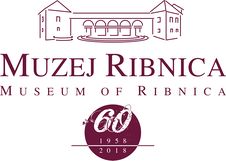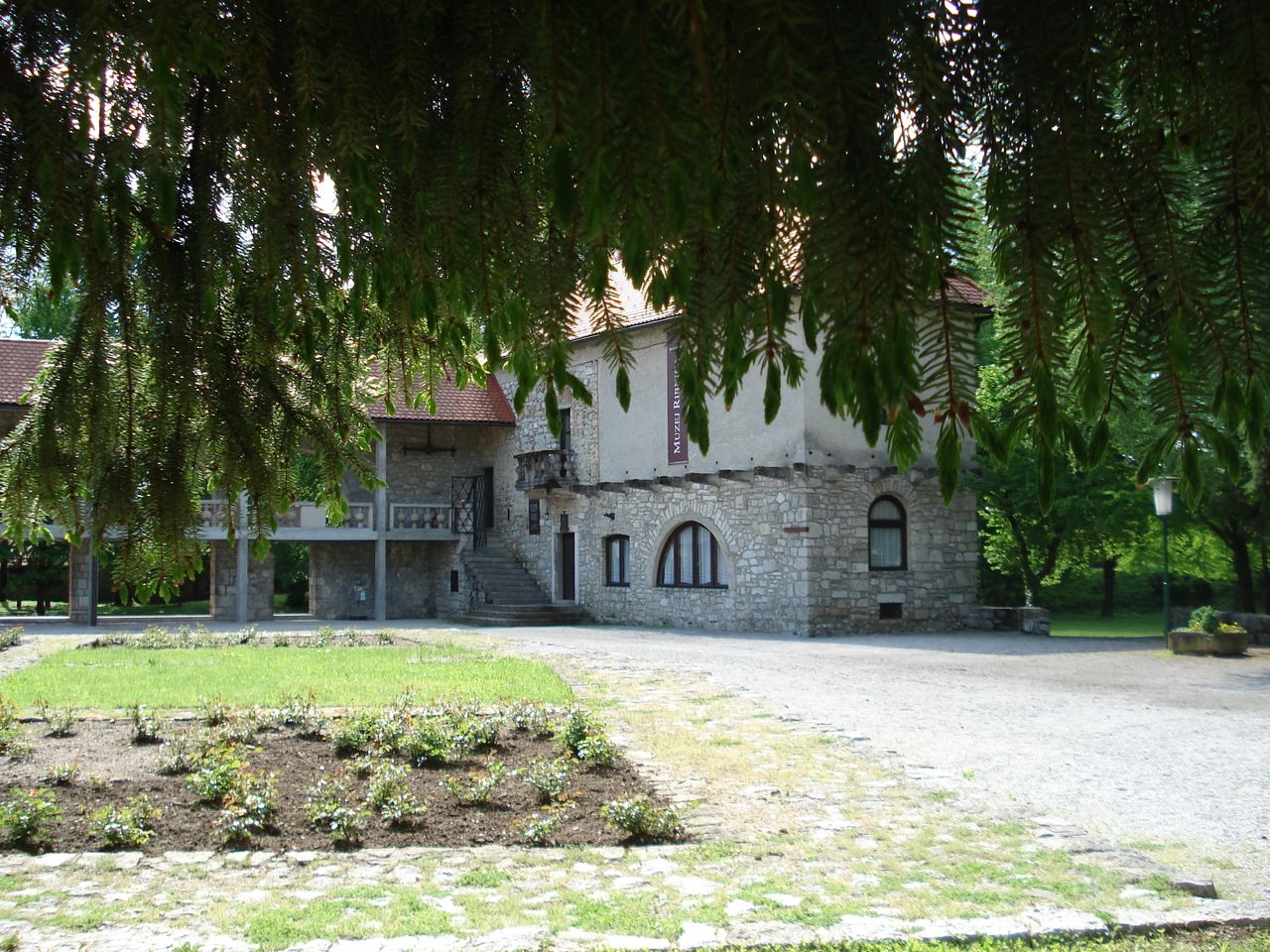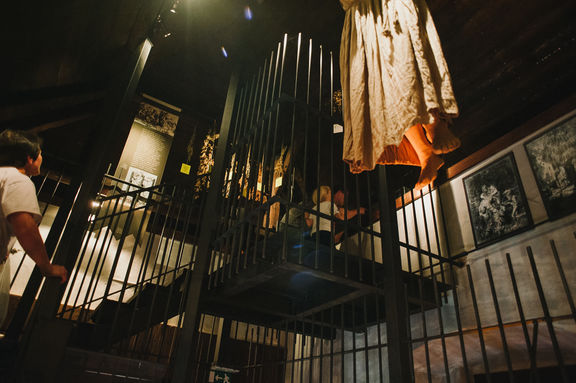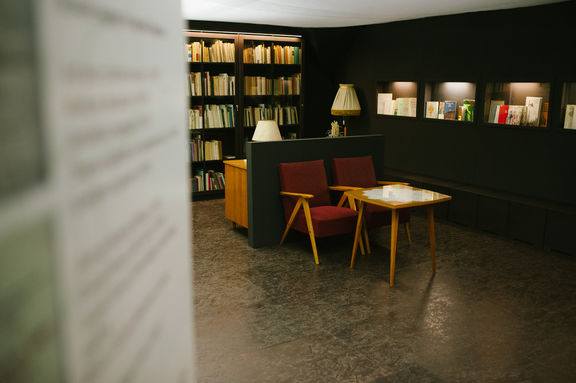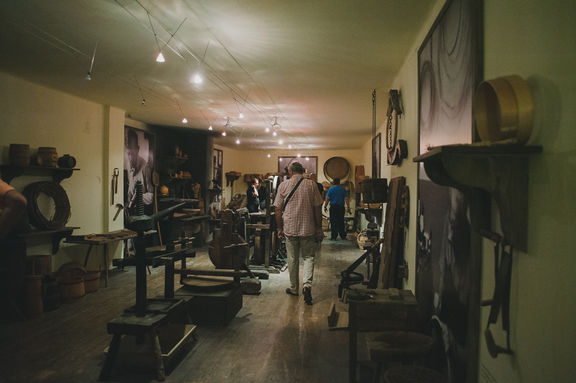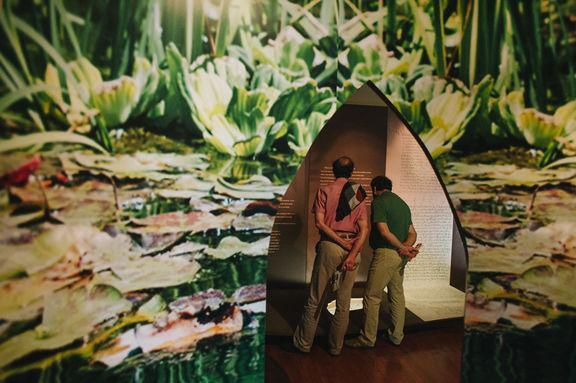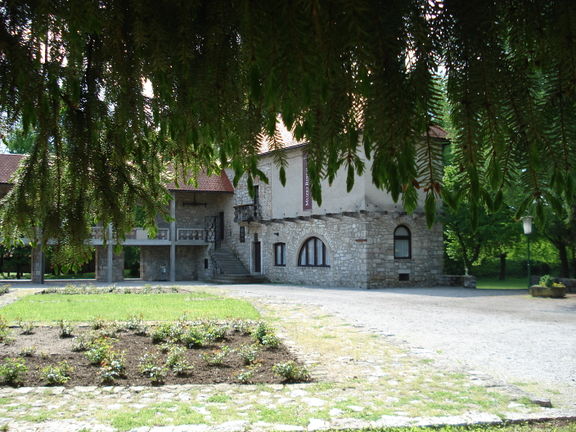Difference between revisions of "Museum of Ribnica"
(infobox changes -by request) |
(English proofreading + Updated 2020) |
||
| (15 intermediate revisions by 2 users not shown) | |||
| Line 1: | Line 1: | ||
{{Article | {{Article | ||
| − | | status = | + | | status = NIFERTIK PHOTO |
| maintainer = Anže Zorman | | maintainer = Anže Zorman | ||
}} | }} | ||
| Line 7: | Line 7: | ||
| name = Museum of Ribnica | | name = Museum of Ribnica | ||
| local name = Muzej Ribnica | | local name = Muzej Ribnica | ||
| + | | logo = Museum of Ribnica 60 years.jpg | ||
| street = Cesta na Ugar 6 | | street = Cesta na Ugar 6 | ||
| town = SI-1310 Ribnica | | town = SI-1310 Ribnica | ||
| − | | map = | + | | map = https://www.openstreetmap.org/?lon=14.72639&lat=45.73812&zoom=17&layer=mapnik |
| telephone = 386 (0) 1 835 0376 | | telephone = 386 (0) 1 835 0376 | ||
| email = muzej.ribnica@amis.net | | email = muzej.ribnica@amis.net | ||
| Line 31: | Line 32: | ||
}} | }} | ||
{{Contact | {{Contact | ||
| − | | name = | + | | name = Vasja Zidar |
| role = Curator | | role = Curator | ||
| email = vasja.zidar@guest.arnes.si | | email = vasja.zidar@guest.arnes.si | ||
| Line 43: | Line 44: | ||
The museum is, as of 2011, managed by the [[Public Institute Ribnica Handicraft Centre]]. The centre is also responsible for the [[Mikl House Gallery]], a separate museum shop and the proliferation of the local handicraft tradition. | The museum is, as of 2011, managed by the [[Public Institute Ribnica Handicraft Centre]]. The centre is also responsible for the [[Mikl House Gallery]], a separate museum shop and the proliferation of the local handicraft tradition. | ||
| + | |||
| + | {{image|Ribnica Castle 2012 Museum of Ribnica.JPG}} | ||
}} | }} | ||
| + | |||
| + | |||
==Permanent exhibitions== | ==Permanent exhibitions== | ||
| − | + | Ribnica Museum's main permanent exhibition – ''Wooden Ware and Pottery'' – is focused on its handicraft and cottage industries tradition, very typical of the region. It includes vessels, spoons, flooring, joinery products, tools, turned articles, wickerwork and toothpicks. A curious and well-known pottery artefact is a horse-shaped clay instrument, the "horse that whistles through its rear". | |
| − | + | {{wide image|Museum of Ribnica 2013 Wooden Ware and Pottery permanent exhibition.jpg}} | |
| − | Located in the defence tower of the castle is an exhibition bearing the name ''Bloody Fight with the Witch Menace''. Focusing on the infamous witch trials during the 16th to 18th centuries, the exhibition presents the history of this troubling practice and among other things exhibits torture devices and documents from the actual trial of a witch hunt | + | The second part of the permanent exhibition presents the material history of Ribnica. The archaeological exhibition on the oldest settlement in the Ribnica Valley depicts a remarkable prehistoric hill fort surrounded by three ramparts. Documents from the 14th century first mention Ribnica's ''suha roba'', wooden arts and crafts. With the 1492 merchant decree of Emperor Friderik III, ''suha roba'' spread all over the Holy Roman Empire and provided the economic self-esteem to the people of the region who built-up Ribnica as a religious and cultural centre. |
| + | |||
| + | {{image|Museum of Ribnica 2013 Bloody Fight with the Witch Menace permanent exhibition.jpg}} | ||
| + | |||
| + | Located in the defence tower of the castle is an exhibition bearing the name ''Bloody Fight with the Witch Menace''. Focusing on the infamous witch trials during the 16th to 18th centuries, the exhibition presents the history of this troubling practice and among other things exhibits torture devices and documents from the actual trial of a witch hunt which took place in Ribnica in 1701 (one of the last recorded witch trials in Slovenia). | ||
| + | |||
| + | |||
| + | |||
| + | == Dislocated sites and collections== | ||
A few minutes from the Ribnica Museum, an original blacksmith forge from the 19th century is preserved and on display. | A few minutes from the Ribnica Museum, an original blacksmith forge from the 19th century is preserved and on display. | ||
| − | The premises of the [[Public Institute Ribnica Handicraft Centre|Ribnica Handicraft Centre]] also holds an exhibition dedicated to | + | The premises of the [[Public Institute Ribnica Handicraft Centre|Ribnica Handicraft Centre]] at the nearby manor called Marof also holds an exhibition dedicated to [[Zmaga Kumer|Dr Zmaga Kumer]], who devoted her life to studying folk music and was an important member of the ethno-musicological community in Slovenia and Europe. |
| + | |||
| + | {{image|Museum of Ribnica 2013 Dr Zmaga Kumer Memory Room.jpg}} | ||
== See also == | == See also == | ||
| Line 65: | Line 80: | ||
== External links== | == External links== | ||
| − | *[http://www.muzej-ribnica.si/ | + | *[http://www.muzej-ribnica.si/ Museum of Ribnica website] |
| + | * [http://www.muzej-ribnica.si/pdf/Suha_roba_in_loncarstvo_web.pdf Woodenware and pottery catalogue] | ||
*[http://www.rokodelskicenter-ribnica.si/english/ Ribnica Handicraft Centre website] | *[http://www.rokodelskicenter-ribnica.si/english/ Ribnica Handicraft Centre website] | ||
| + | |||
| + | |||
| + | {{gallery}} | ||
| + | |||
| + | |||
[[Category:Museums]] | [[Category:Museums]] | ||
[[Category:Municipal museums]] | [[Category:Municipal museums]] | ||
| Line 73: | Line 94: | ||
[[Category:Collections]] | [[Category:Collections]] | ||
[[Category:Updated 2017]] | [[Category:Updated 2017]] | ||
| + | [[Category:Ethnographic museums and collections]] | ||
| + | [[Category:Updated 2020]] | ||
Latest revision as of 09:19, 5 August 2020
Permanent exhibitions
Ribnica Museum's main permanent exhibition – Wooden Ware and Pottery – is focused on its handicraft and cottage industries tradition, very typical of the region. It includes vessels, spoons, flooring, joinery products, tools, turned articles, wickerwork and toothpicks. A curious and well-known pottery artefact is a horse-shaped clay instrument, the "horse that whistles through its rear".
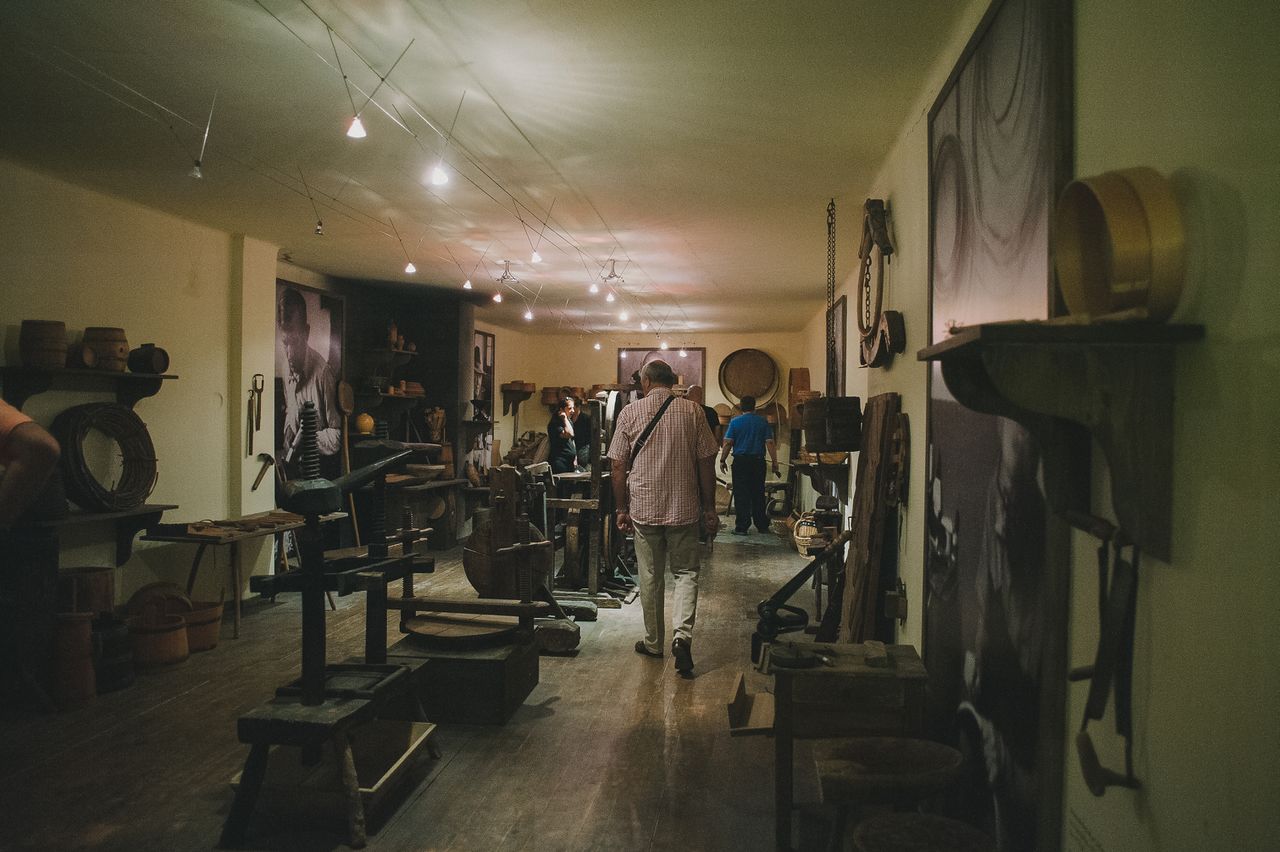 Wooden Ware and Pottery, permanent exhibition, Museum of Ribnica, 2013.
Wooden Ware and Pottery, permanent exhibition, Museum of Ribnica, 2013.
The second part of the permanent exhibition presents the material history of Ribnica. The archaeological exhibition on the oldest settlement in the Ribnica Valley depicts a remarkable prehistoric hill fort surrounded by three ramparts. Documents from the 14th century first mention Ribnica's suha roba, wooden arts and crafts. With the 1492 merchant decree of Emperor Friderik III, suha roba spread all over the Holy Roman Empire and provided the economic self-esteem to the people of the region who built-up Ribnica as a religious and cultural centre.
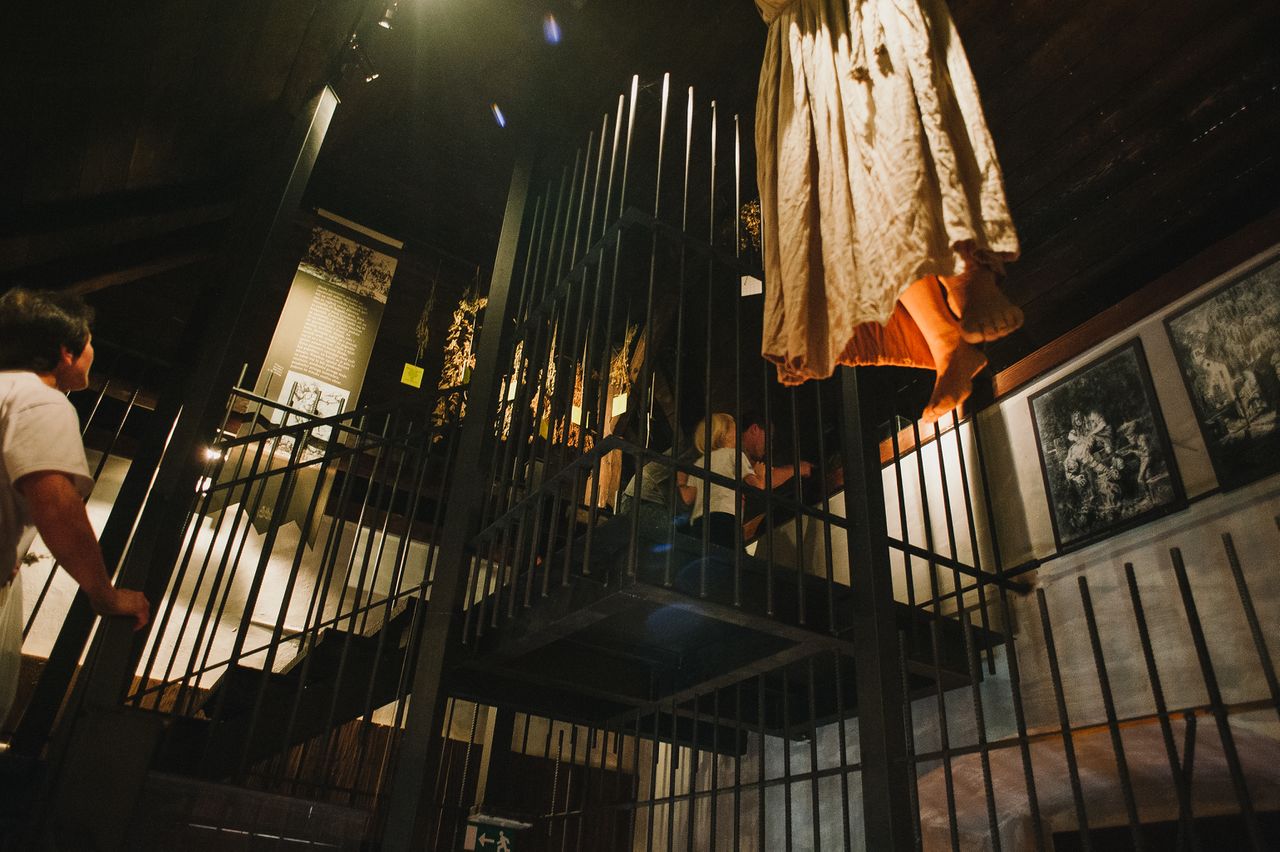 Bloody Fight with the Witch Menace, permanent exhibition, Museum of Ribnica, 2013.
Bloody Fight with the Witch Menace, permanent exhibition, Museum of Ribnica, 2013.
Located in the defence tower of the castle is an exhibition bearing the name Bloody Fight with the Witch Menace. Focusing on the infamous witch trials during the 16th to 18th centuries, the exhibition presents the history of this troubling practice and among other things exhibits torture devices and documents from the actual trial of a witch hunt which took place in Ribnica in 1701 (one of the last recorded witch trials in Slovenia).
Dislocated sites and collections
A few minutes from the Ribnica Museum, an original blacksmith forge from the 19th century is preserved and on display.
The premises of the Ribnica Handicraft Centre at the nearby manor called Marof also holds an exhibition dedicated to Dr Zmaga Kumer, who devoted her life to studying folk music and was an important member of the ethno-musicological community in Slovenia and Europe.
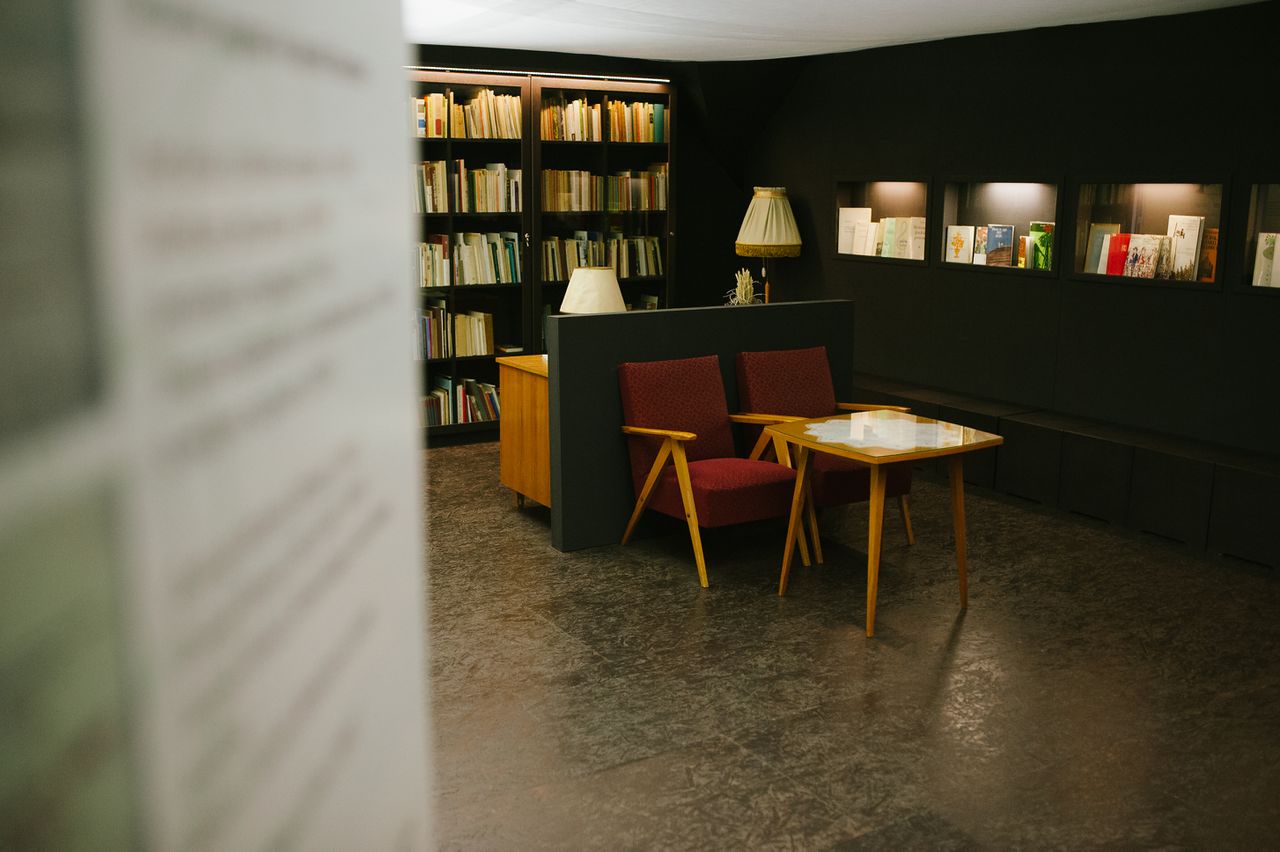 Dr. Zmaga Kumer Memorial Room, Museum of Ribnica, 2013.
Dr. Zmaga Kumer Memorial Room, Museum of Ribnica, 2013.
See also
External links



